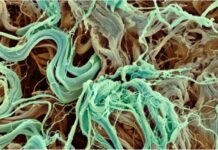Ended soon

Federal health officials are urging parents of newborns to sterilize equipment used for both bottle- and breast-feeding. The warning comes after the death of a premature baby who was infected with the bacteria Cronobacter sakazakii, which was linked to a contaminated breast pump. This same bacteria was responsible for a recall and nationwide shortage of powdered infant formula last year.
The Centers for Disease Control and Prevention (CDC) released a report on Thursday, which revealed that a premature boy was infected with the bacteria Cronobacter sakazakii. The same bacteria was responsible for the recall and nationwide shortage of powdered infant formula in the past year. The baby’s infection was not caused by contaminated formula. However, genetic sequencing linked the infection to bacteria isolated from a breast pump used at home.
The infant had been fed a mix of breastmilk and liquid human milk fortifier through a tube. The investigation found that the home breast pump was cleaned in a household sink, sanitized, and sometimes assembled while still moist. The samples from expressed milk, a breast pump used in the hospital, and the liquid human milk fortifier were all negative for the bacteria.
Dr. Julia Haston, an expert in pediatric infectious diseases, stated that the case underscores the danger of cronobacter bacteria, which are found widely in the environment and can lead to severe and deadly infections. She emphasized the importance of taking steps to prevent infections, such as thoroughly washing, sanitizing, and drying hands, equipment, and all surfaces before feeding a baby.
Sterilizing Equipment for Feeding Newborns
Sterilization of equipment used for feeding newborns is a vital practice that every parent should adhere to. It can help prevent infections, which can be fatal for infants, especially premature babies. Federal health officials recommend that parents should clean and sterilize all equipment used for breastfeeding and bottle feeding. This includes breast pumps, feeding bottles, and any other equipment used for feeding.
According to Dr. Julia Haston, it is important to sanitize and dry hands before handling equipment used for feeding newborns. It is also crucial to sanitize all surfaces where the equipment is used, such as countertops and tables. This helps to eliminate any bacteria that may be present and prevent them from contaminating the equipment.
Sterilization of Breast Pumps
Breast pumps are an essential tool for mothers who choose to breastfeed their babies. They provide a way for mothers to extract breast milk, which can be stored and used later. However, breast pumps need to be sterilized properly to prevent contamination and the spread of bacteria.
According to the CDC, breast pumps should be cleaned and sterilized after every use. The cleaning process involves disassembling the pump and washing all the parts that come into contact with milk with soap and warm water. The parts should then be rinsed thoroughly and air-dried.
After cleaning, the breast pump should be sterilized using a sterilization solution or boiling water. Sterilization using a sterilization solution involves soaking the breast pump parts in the solution for the recommended time. The solution should then be rinsed off with clean water, and the parts air-dried.
Boiling water sterilization involves boiling the breast pump parts in water for the recommended time. After boiling, the parts should be removed from the water and air-dried. The CDC recommends that parents follow the manufacturer’s instructions for cleaning and sterilizing breast pumps.
The death of a premature baby due to a rare infection linked to a contaminated breast pump highlights the importance of sterilizing equipment used for both bottle- and breast-feeding. Federal health officials are urging parents to take steps to prevent infections by thoroughly washing, sanitizing, and drying hands, equipment.



